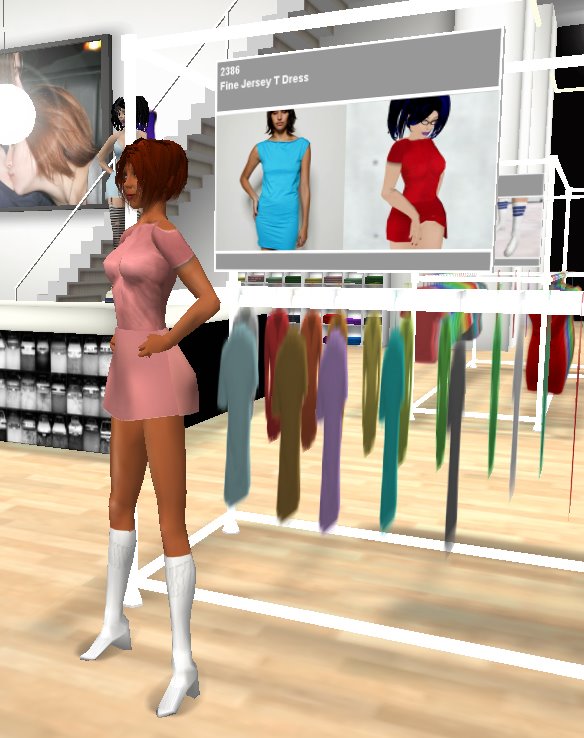In my first post I mentioned that politicians were trying to enter the virtual world through the use of Second Life. However, they’re not the only ones as brands have been using virtual reality for a few years now.
Second Life allows users to buy virtual content such as clothing and houses for their characters/avatars with real money. Therefore, this world presents a perfect opportunity to engage with consumers in what some describe as their other life. Brands such as American Apparel and Adidas were some of the first brands to create a presence in the virtual world, selling virtual items that could also be bought on their websites.
In June 2006 American Apparel was the first real company to open a store in Second Life. You could tell that it was all strictly business as they ensured that users would be persuaded to visit either its real store or website. Clothing racks displayed pictures of both real and virtual models modelling the clothing shown on the racks. Clicking on displays would bring up a dialog which directed users to the webpage of the clothes displayed.
It sounds like an idea that should have worked because if your character is fully clothed in American Apparel, you’ll be all the more motivated to perhaps pop into a real American Apparel store, even if just to simply see what the clothes will look like on the real you. For users who are already loyal American Apparel customers, this virtual shop would have allowed them to really engage with the brand both in their offline and online lives. They dress their avatars how they’d dress in their real lives, become walking advertisements of the brand to other Second Life users and the brand comes to represent more than just a clothing brand and also a brand that is relevant to every aspect of their lives.
However the store closed a year later with the company explaining on their website that they felt that their time was up. A search for more information on why this idea didn’t work led me to this article, where it suggests the possible problems as low traffic and profits (considering that opening the store may well have cost the company around £10,000 to build, yet items such as the Jersey T dress above were sold for 350 of Second Life currency - only $1 of real currency).
It seems that American Apparel didn’t completely give up on the idea of having a virtual presence as it moved to MTV’s Virtual Lower East Side. I guess they realised that their target audience wasn’t really using Second Life anyway.
The question is was the way in which American Apparel approached the virtual world the problem or was it that virtual reality either isn’t developed enough for brands to operate in and communicate with users. In the BBC article, many of the comments were about how hard it is to use Second Life. So maybe the problem is that virtual reality isn’t user friendly enough for its users let alone for brands and advertising purposes. However, you still can’t ignore that as much as Second Life is supposed to be like our other lives, many of us don’t want it to be exactly like our real lives otherwise there’d be no need for virtual worlds. Therefore, we may not want brands in these other lives, especially brands who aren’t even attempting to disguise the fact that they’re only there to advertise to you.
I like the way Claire Beale puts it in her article:
‘The agencies must proceed with extreme caution, though. Like so many community
sites on the web, Second Life is still relatively virgin territory for brands,
and overt consumerism will be quickly stamped on.’
Overt consumerism was definitely stamped upon in the case of American Apparel as the company suffered a virtual terrorist attack. ‘A group called the Second Life Liberation Army gunned down virtual shoppers at American Apparel to protest the commercialization of the site.’
If use of virtual reality amongst brands becomes popular could we see advertising, marketing and pr agencies creating virtual departments? Whilst researching for this blog I came across companies such as Rivers Run Red who help brands/companies create a virtual presence. Could we see agencies that specialise in virtual spaces?
References


No comments:
Post a Comment